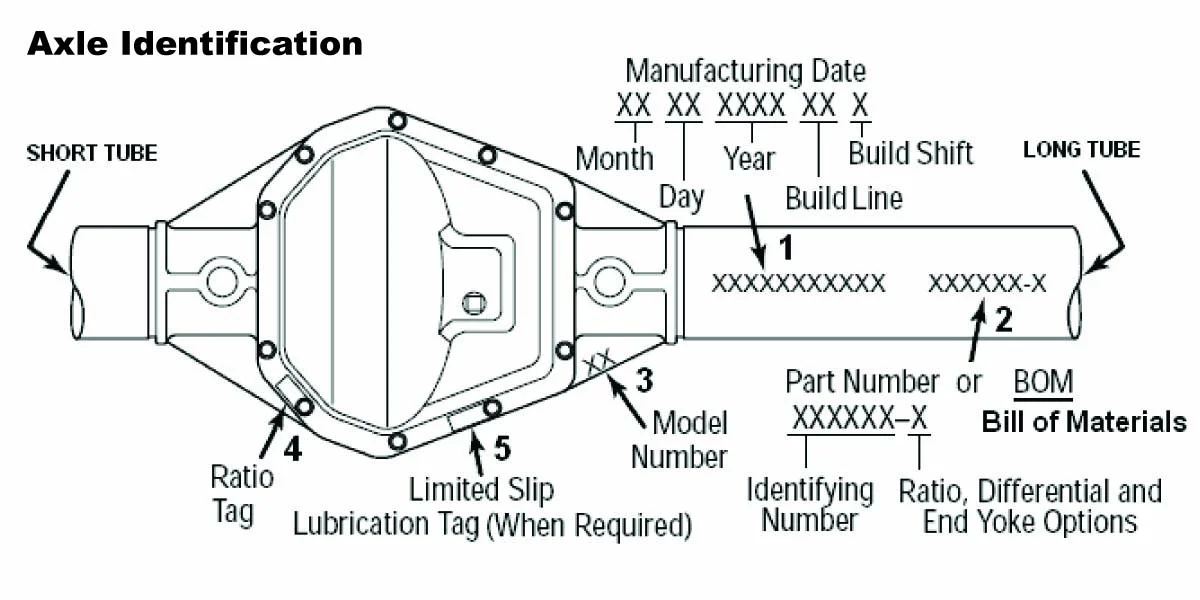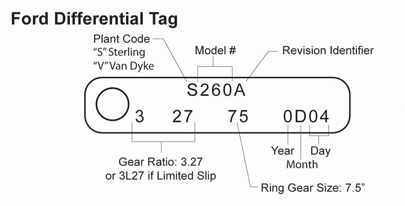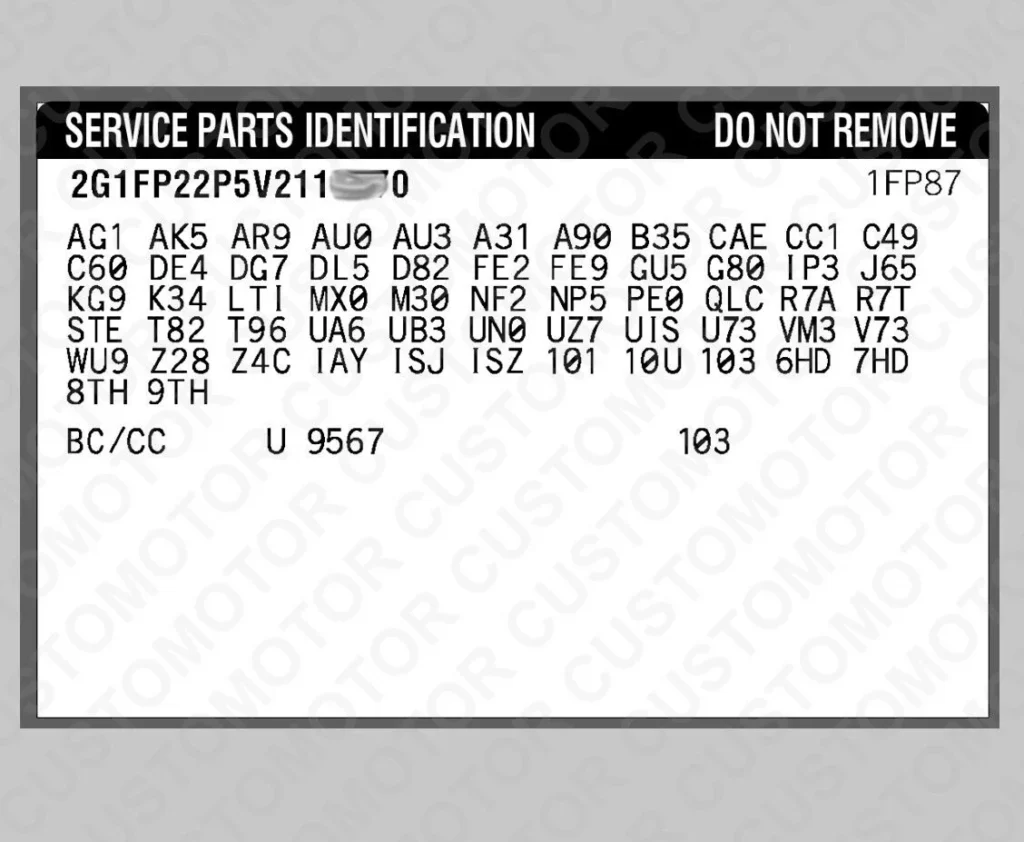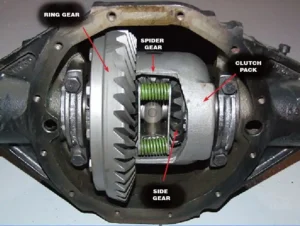Identifying a vehicle’s differential correctly is a non-negotiable step in repairs, upgrades, or part replacements. While many axles may look alike, the internal details—gear ratios, locking mechanisms, housing types—can vary dramatically between manufacturers. Misidentification can lead to wasted time, incorrect parts, and performance issues. This guide walks you through how to decode differential tags and stampings for key manufacturers: Dana/Spicer, Ford, GM, Toyota, and Mitsubishi. Along the way, you’ll also pick up practical tips for visual ID when tags are missing.
Reading Differential Tags and Stampings
The first place to start is the metal tag or stamped code on your differential. These are usually found under a cover bolt, on the axle tube, or stamped directly into the housing. They provide essential information like gear ratio, axle type, part number, and more.
Understanding how to read them can save hours of disassembly or guesswork. Look for codes like BOM numbers (Bill of Materials), gear ratios (e.g., 3.73), or specific identifiers linked to manufacturing plants. If the tag is corroded or missing, other clues may still be available—but preserving this data early is crucial.
For most vehicles, this tag is your fastest way to figure out whether you’re working with an open diff, limited-slip, or locker; whether the ring gear is 7.5”, 8.8”, or 10.5”; and whether the carrier matches the axles and housing you have.
How Major Brands Encode Their Differentials
Different manufacturers use distinct systems, each with its quirks. Getting familiar with the unique formats and identifiers of major brands makes the decoding process much faster and more accurate.
Dana/Spicer
Dana and Spicer axles are found in everything from off-road Jeeps to heavy-duty pickups. Their metal tags are typicallybolted to the differential cover or attached to one of the axle tubes. The tag usually includes a Bill of Materials (BOM) number, a gear ratio, and other key identifiers.


Sample tag:
605561-1= BOM number3.54= Gear ratio215= Possibly a batch or production number
The BOM number is the most important piece. With it, you can access detailed axle specs including bearing size, shaft spline count, and carrier break points. Dana’s axle tube stampings may also be faintly visible near the pumpkin—cleaning the surface thoroughly can reveal what you need.
Dana’s numbering system is so widely used that many aftermarket rebuild kits and differential charts reference BOM numbers as the standard.
Ford
Ford’s differential tags are typically small metal tags bolted under one of the differential cover bolts. On some models, you may also find a sticker on the door jamb listing the axle code.

Sample tag:
3L27= 3.27 gear ratio, “L” means limited-slip88= 8.8-inch ring gear6J08= Manufacture date (2006, September 8)
Month codes go alphabetically: A = January, B = February, and so on.
On newer vehicles, check the driver-side door jamb sticker under “AXLE” and cross-reference the code with Ford axle ID charts. This system is especially important for distinguishing between similar-looking 8.8” and Super 8.8” axles.
GM (General Motors)
GM uses Regular Production Option (RPO) codes—three-character alphanumerics usually found on a white sticker inside the glove box, trunk lid, or driver-side door jamb, depending on the model and year.

Examples:
G80= Locking differential (Gov-Lock)GU6= 3.42 axle ratioGT4= 3.73 axle ratio
Toyota
Toyota’s differential code is stamped directly on the VIN plate, usually located in the engine bay firewall, driver-side door jamb, or inner fender.
Sample tag:
G= 8” ring gear14= 4.10 gear ratio4= Differential type (e.g., open, LSD, locker)
Examples:
G294= 8” diff, 4.10 gears, electric lockerA02A= 7.5” diff, 3.91 gears, open
Toyota enthusiasts often consult online lookup tables to decode these axle codes. These systems are consistent across many models, including 4Runner, Tacoma, Hilux, and Land Cruiser.
Mitsubishi
Mitsubishi’s differential and axle codes are usually stamped on the under-hood VIN/ID plate, or engraved on the differential housing itself. On older models, look near the firewall or radiator support.
LSD= Limited Slip Differential10B= 10-bolt ring gearV5M31= Transmission model
When Tags Are Missing: Identify by Sight
When the tag is gone or unreadable, physical characteristics become your best friends. Every differential has visual traits you can use for identification:
- Bolt count on the cover (e.g., Dana 44 has 10 bolts)
- Shape of the cover (oval, hex, round)
- Size of the ring gear (measurable with calipers)
- Carrier style: integral vs. dropout
Field-Proven Tips to Get It Right
Here are hands-on methods techs and rebuilders use every day:
- Use degreaser and a brass brush to clean the tag or stamped area without damaging it.
- Measure the ring gear directly if you’re unsure—diameter is a reliable indicator.
- Do a spin test: rotate the driveshaft while the wheels are off the ground and count how many turns it takes for one wheel revolution.
- Document everything before teardown: photos, measurements, and tag codes.
- Build a digital record for each vehicle or axle you work on. This saves time on future upgrades or sales.
Final Thoughts
Differential identification is more than a mechanical chore—it’s the foundation for doing axle work right. Whether you’re chasing the right gear ratio for fuel economy, upgrading to a locker for off-road traction, or just replacing worn internals, knowing exactly what you’re working with is step one.
The decoding systems from Dana, Ford, GM, Toyota, and Mitsubishi each bring their own logic, and once you learn to recognize the patterns, what seemed cryptic becomes routine. Combine this knowledge with visual inspection skills and documentation habits, and you’ll gain an edge whether you’re building axles for work or for the trail.



